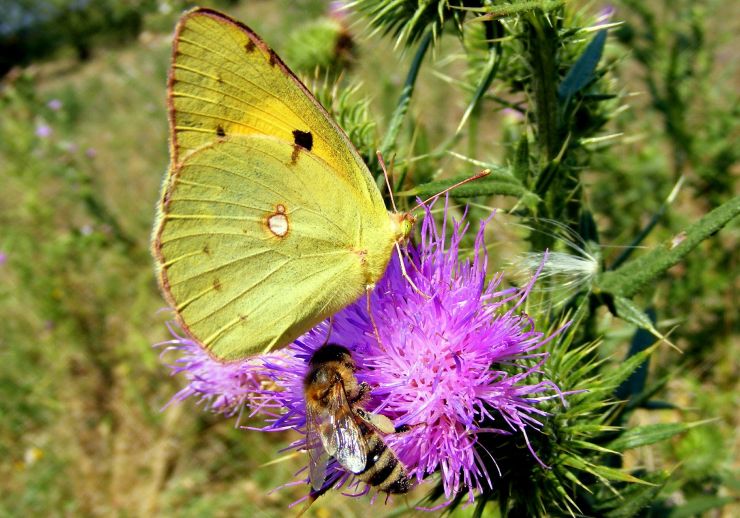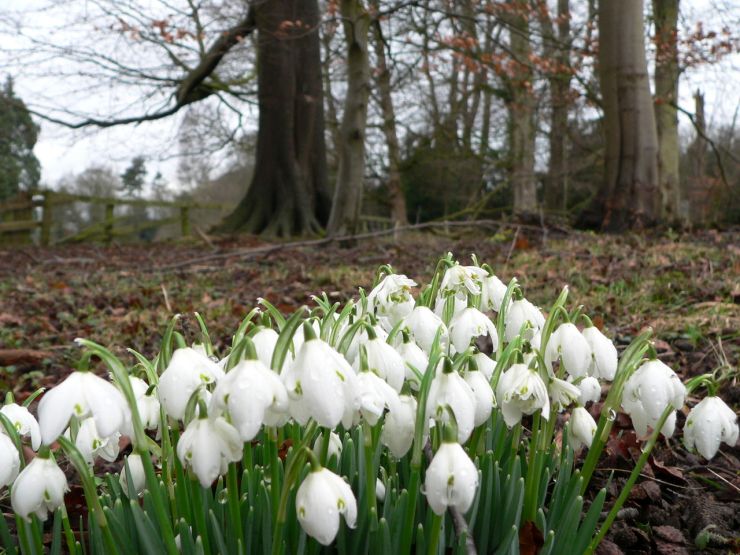What To Do In February

So Face February in the Garden with a Smile!
Blue Monday was created back in 2007 by a television channel devoted to travel. Originally a publicity campaign, this supposedly depressing day combines a combination of anti-climatic feelings post Christmas and dark, dismal weather conditions. Mocked by academics as pseudo-science, the day took hold and now seems to be a permanent fixture in the calendar. The actual day changes from year to year, being the third Monday in January - this year it was Monday 29th January 2018. Hopefully you managed to beat the blues, by holing up in your greenhouse with some seed catalogues, a mug of something warming and a nice cosy heater. But Blue Monday has well and truly gone for this year, so put your best wellies forward and face February with a smile!

It may be late winter, and although the weather can be super-chilly with snow and ice being common deterrents to getting out in the garden, if you look carefully, the promise of spring is already emerging. Week by week, more flowers start to bloom; if you're lucky you'll be blessed with snowdrops, heather, hellebores and maybe a few shoots of delightful winter-flowering cherry. Take in a few snippets for the house and combine with some evergreen foliage, such as holly, Pittosporum, Euphorbia (look out for the sap!) or some amazing red Cornus twigs. Winter need never suffer from a lack of colour, or fragrance for that matter. If you don't have any winter scent in your garden, make it a must for your 'to do' list, Daphne, sweet box or witch hazel are all worth seeking out.
.jpg)
Jobs Around the Garden in February
- Garden Hygiene - Take a few simple steps now to reduce the pest and disease problem later in the year. Aphids can overwinter as eggs in cosy crevices on material that would be better destroyed. Slugs and snails can thrive in piles of leaves and debris, that could be easily cleared away and many diseases like black spot and mildew can overwinter on old leaves left on the ground. So, a good tidy up is not only good for the eye (and the soul) it's good for the soil and the plants that thrive on it.
- Mulch shrubs, trees, hedges and climbers, once pruned.
- Keep an eye on conifers and tie in any branches that have been whipped out of shape by wind or snow
- Prune wisteria and campsis - cut back side shoots to two or three buds
- Cut back late summer/autumn flowering clematis
- Prune 'cool season' grasses, like deschampsia, they've provided a lovely skeleton effect through autumn and winter, but time to cut them down close to ground level, in time for the new shoots to emerge
- Bare-root or containerised roses can be planted now, as can lily bulbs
- Prune autumn-fruiting raspberries and tidy up summer-fruiting raspberries if they've outgrown their supports
- Sow broad beans directly in the ground
- Apply a generous layer of well-rotted manure to perennial fruit and vegetable crops
- Protect tender fruit blossoms with horticultural fleece (apricots/nectarines/peaches)
Late Winter Tasks in the Greenhouse
It's all about sowing seeds this month if you want an early show of glorious annual blooms in the garden this year. And, good to get started with your veggie seeds for indoors and outdoors. Continue to water with care and once the days start to get longer, give more water to most plants.
Make the most of any flowers in the greenhouse, but watch out for nasty pests and be vigilant about removing their hiding places, spent flowers and dead leaves. And look out for warmer days, when the greenhouse would benefit from extra ventilation. About now you could also think about turning on your automatic vents if you turned them off for the winter.
ORNAMENTAL
Sow
- Sweet peas in greenhouse or cold frame
- Hollyhocks, sunflowers, busy Lizzies and begonias in a heated propagator
Plant
- Tender bulbs like amaryllis and tuberous begonias in a cool greenhouse
- Lilium and Gloriosa in an unheated greenhouse
Other Tasks
- Take cuttings from chrysanthemums
- Cover seedlings on cold nights and keep a check on any that need potting on
FRUIT AND VEGETABLES
- Last chance to order seeds like garlic and shallots
- Sow tomatoes and melons if the greenhouse is warm enough
- Sow onions and leeks
- Pot dahlia tubers to provide shoots for cuttings
- Pot up shallots and garlic
- Sow cauliflowers for outdoors
- Sow aubergines, beans, carrots, peas, radishes and salad leaves for indoors and chillies, peppers and tomatoes at room temperature, indoors, to provide early plants for growing under glass
- Prune grapes, figs and passionfruit
Watching out for Wildlife
Keep your feathered friends fit and healthy by continuing to feed, and tidy up any debris beneath the bird feeders to keep rodents at bay.
If you'd like to encourage Brimstone butterflies to your garden in the spring, plant some alder buckthorn now, especially on wet clay soil. Their scientific name is Gonetpteryx rhamni and it's thought the word 'butterfly' originates from the buttery, yellow colour of the male Brimstone. The female wings are very pale green, almost looking white, whereas the males have yellow upper wings and yellow/green underwings. What a lovely creature to see emerging on warm spring days, and knowing that its existence has coined the word 'butterfly' makes it even more special!
Most small mammals stay mainly inactive during the cold winter months, only venturing out for food during particularly mild spells. However, the common shrew is a greedy feeder and will forage in all weathers. They love some nice tasty snails and woodlice and although they do also consume some garden-friendly insects, in the main they are considered to be a gardener's friend.
While you're watching out for wildlife, take time to observe the earliest Crocus chrysanthus hybrids, bringing clumps of colours to the winter landscape and start looking ahead to warmer climes, while you plant your lily bulbs in borders or pots.
 Author:
Author: